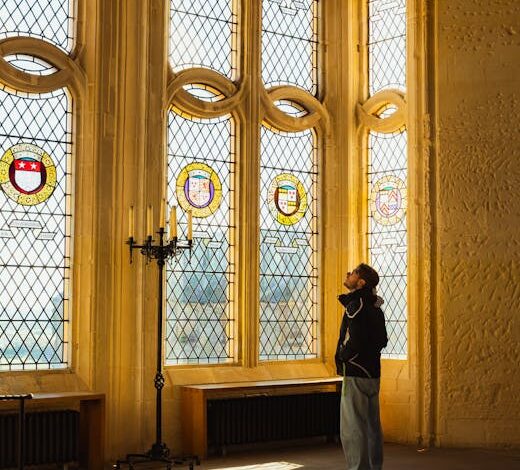The Elephant in the Room: Why is 3D Segmentation So Hard?

Imagine a world where your smart device, a robot, or even an autonomous vehicle doesn’t just see a jumble of pixels, but truly understands every individual object in its environment. Not just “there’s a car,” but “that specific car, separate from the one next to it, and that’s a tree, and that’s a bench.” This isn’t just about identifying categories; it’s about segmenting each unique instance in a complex 3D space. Crucially, it needs to do this without being told beforehand what specific objects to look for, and it needs to do it fast.
For years, achieving this level of 3D instance segmentation has been a holy grail in computer vision. Traditional methods often involved heavy, class-specific models or intensive neural field optimizations that, while powerful, could take hours to process even a single scene. The computational cost and the need for pre-defined object classes were significant bottlenecks, limiting their real-world applicability.
But what if there was a way to bypass these hurdles? What if we could achieve accurate, class-agnostic 3D segmentation with unprecedented efficiency? Enter 3DIML, a groundbreaking approach developed by researchers at MIT. This innovative method promises to revolutionize how we understand and interact with 3D environments, making advanced scene analysis not just possible, but practically viable.
The Elephant in the Room: Why is 3D Segmentation So Hard?
At its core, 3D instance segmentation involves identifying and isolating every individual object within a three-dimensional scene. Think of it like giving a computer “sight” beyond simple object recognition, allowing it to delineate the precise boundaries of each unique entity – a chair, a lamp, a book, a person – in a 3D point cloud or volumetric representation. This is fundamental for applications ranging from robotics navigating cluttered environments to augmented reality experiences seamlessly blending digital objects with the physical world.
The challenge intensifies when you consider existing methods. Many state-of-the-art techniques, such as Panoptic Lifting and Contrastive Lifting, rely heavily on optimizing neural fields (like NeRFs). While these neural fields are incredibly adept at representing complex scenes, their optimization process is notoriously time-consuming. Imagine training a neural network for hours just to segment objects in one relatively small area! This sheer computational expense has been a major barrier to widespread adoption, particularly in scenarios demanding real-time performance or rapid deployment.
Furthermore, many approaches are either class-specific, meaning they need to be pre-trained to recognize certain categories of objects, or they struggle with the consistency of object identities across different views of the same scene. If a camera moves around an object, the system needs to understand it’s the same object, not a new one. This “view-consistency” is critical for building a coherent 3D understanding.
3DIML’s Elegant Solution: Circumventing Complexity
3DIML (3D Implicit Instance Mapping and Lifting) tackles these challenges head-on by rethinking the problem. Instead of solely relying on optimizing a neural field from the ground up for instance segmentation, 3DIML employs a novel, two-stage approach: InstanceMap and InstanceLift. It generates and refines view-consistent pseudo instance masks directly from a sequence of posed RGB images, cleverly sidestepping the computational heavy lifting that bogs down other methods.
At its heart, 3DIML makes strategic use of implicit scene representation methods only at “critical junctions” – specifically, *after* the initial InstanceMap phase. This selective application drastically reduces the number of training iterations required for the neural field, leading to an astonishing 25x fewer training iterations compared to methods that continuously optimize the neural field. It’s like having a highly efficient detective who only calls in the big guns for the most crucial pieces of evidence, rather than having them analyze every single speck of dust.
Beyond Speed: Benchmarking 3DIML’s Real-World Performance
The promise of efficiency is one thing, but the proof is in the performance. This is where 3DIML truly shines, especially when benchmarked against its contemporaries. The team rigorously evaluated 3DIML on challenging datasets like Replica-vMap and ScanNet, which offer richly annotated 3D reconstructions of indoor scenes and realistic camera trajectories.
Let’s talk numbers, because they tell a compelling story. When compared to Panoptic Lifting, which averaged 5.7 hours of training across various scans, and Contrastive Lifting, which took around 3.5 hours, 3DIML completed the same tasks in under 20 minutes – averaging a mere 14.5 minutes! This isn’t just an incremental improvement; it’s a paradigm shift in practical runtime. Imagine what a difference that makes in a rapid prototyping environment or a dynamic real-world application.
This incredible speed is not just due to fewer neural field iterations. 3DIML also leverages components that can be easily parallelized, such as the dense descriptor extraction using LoFTR and the crucial label merging process. This means that multiple parts of the pipeline can work simultaneously, further enhancing its efficiency without sacrificing accuracy.
Precision in Practice: Grounded SAM, Novel Views, and InstanceLoc
What about the quality of the segmentation? While achieving such speed, 3DIML approaches Panoptic Lifting in performance on metrics like Scene Level Panoptic Quality. Furthermore, 3DIML’s InstanceLift component proves highly effective at interpolating labels that might be missed by frontend segmentation models like GroundedSAM and resolving ambiguities that these models sometimes produce. This refinement capability ensures that even with initial imperfections, the final 3D instance masks are robust and consistent.
The ability to understand scenes goes beyond static images; it’s about anticipating new perspectives. 3DIML excels here with its InstanceLoc feature. This component allows for rapid localization of instances in unseen views. For Replica-vMap and FastSAM, InstanceLoc can process localized images at an impressive rate of 0.16 seconds per image, or approximately 6.2 frames per second. This makes it incredibly valuable for real-time applications, such as augmented reality overlays or robot navigation that needs instant object recognition from new viewpoints.
Moreover, InstanceLoc isn’t just for new views; it can also be applied as a post-processing step to the renders of input sequences, acting as a denoising operation to further refine and stabilize the segmentation. This kind of flexibility and robustness, even against large viewpoint changes and duplicate objects (given sufficient context), underscores 3DIML’s potential for diverse practical uses.
Real-World Impact and Future Horizons
The implications of 3DIML’s efficiency and class-agnostic nature are vast. Consider robotics: a robot can now quickly and accurately perceive its surroundings, distinguishing every object without needing pre-programmed knowledge of every possible item it might encounter. In augmented reality, this means more seamless and believable digital integrations, where virtual objects correctly interact with real-world instances. For creating digital twins of physical spaces, 3DIML offers a much faster path to detailed, instance-level scene understanding.
Of course, no method is without its challenges. The researchers openly acknowledge that in extreme viewpoint changes, 3DIML can sometimes produce discontinuous 3D instance labels. For example, in a scene where a chair is only ever partially visible from opposing angles, InstanceMap might struggle to link these partial views as the same object. However, the good news is that these instances are “very few” per scene and can be “easily fixed via sparse human annotation,” suggesting that the path to near-perfection isn’t a monumental undertaking.
This transparent discussion of limitations, coupled with such impressive advancements, paints a complete picture of 3DIML’s current state and its exciting trajectory. The foundation laid by George Tang, Krishna Murthy Jatavallabhula, and Antonio Torralba from MIT offers a compelling vision for the future of 3D instance segmentation – a future that is not just accurate and insightful, but also remarkably efficient and adaptable.
Ultimately, 3DIML isn’t just another incremental step; it’s a leap towards making advanced 3D scene understanding accessible and practical for a wider range of real-world applications. By prioritizing efficiency without compromising on performance, it empowers developers and researchers to build more intelligent, responsive, and intuitive systems that truly “see” and understand our 3D world.





